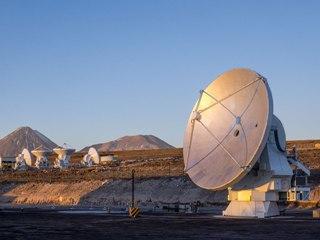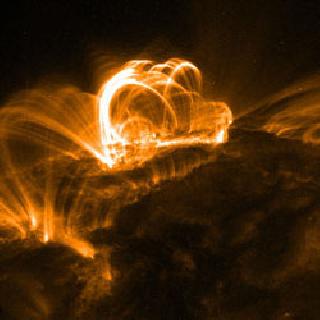
The Atacama Large Millimeter/submillimeter Array (ALMA) telescope. Photo: ESO/C. Pontoni
WASHINGTON (PTI): Astronomers have discovered a far-flung trio of primitive galaxies, hiding inside an enormous blob of primordial gas, nearly 13 billion light-years from Earth.
The discovery was made possible by the combined power of the Atacama Large Millimeter/submillimeter Array (ALMA) telescope and NASA's Hubble Space Telescope.
"This exceedingly rare triple system, seen when the Universe was only 800 million years old, provides important insights into the earliest stages of galaxy formation during a period known as 'Cosmic Dawn,' when the Universe was first bathed in starlight," said Richard Ellis, the Steele Professor of Astronomy at the California Institute of Technology and member of the research team.
"Even more interesting, these galaxies appear poised to merge into a single massive galaxy, which could eventually evolve into something akin to the Milky Way," Ellis said.
Researchers first detected this object, which appeared to be a giant bubble of hot, ionised gas, in 2009. Dubbed Himiko (after a legendary queen of ancient Japan), it is nearly 10 times larger than typical galaxies of that era and comparable in size to our own Milky Way.
Subsequent observations with the Spitzer Space Telescope suggested that Himiko might represent a single galaxy, which would make it uncharacteristically massive for that period of the early Universe.
"The new observations revealed that, rather than a single galaxy, Himiko harbours three distinct, bright sources, whose intense star formation is heating and ionising this giant cloud of gas," said Masami Ouchi, an associate professor at the University of Tokyo who led the international team of astronomers from Japan and the United States.
Areas of such furious star formation should be brimming with heavy elements such as carbon, silicon, and oxygen. These elements are forged in the nuclear furnaces of massive, short-lived stars like those bursting into life inside the three galaxies detected by Hubble.
At the end of their relatively brief lives, these stars explode as supernovas, seeding the intergalactic medium with a fine dust of heavy elements.
"When this dust is heated by ultraviolet radiation from massive newborn stars, the dust then re-radiates at radio wavelengths," said Kotaro Kohno, a member of the team also with the University of Tokyo.
"Such radiation is not detected in Himiko," Kohno said.
The astronomers speculated that a large fraction of the gas in Himiko could be primordial, a mixture of the light elements hydrogen and helium, which were created in the Big Bang.
If correct, this would be a landmark discovery signalling the detection of a primordial galaxy seen during its formation, researchers said.
 Previous Article
Previous Article Next Article
Next Article













The Indian Air Force, in its flight trials evaluation report submitted before the Defence Ministry l..
view articleAn insight into the Medium Multi-Role Combat Aircraft competition...
view articleSky enthusiasts can now spot the International Space Station (ISS) commanded by Indian-American astr..
view article